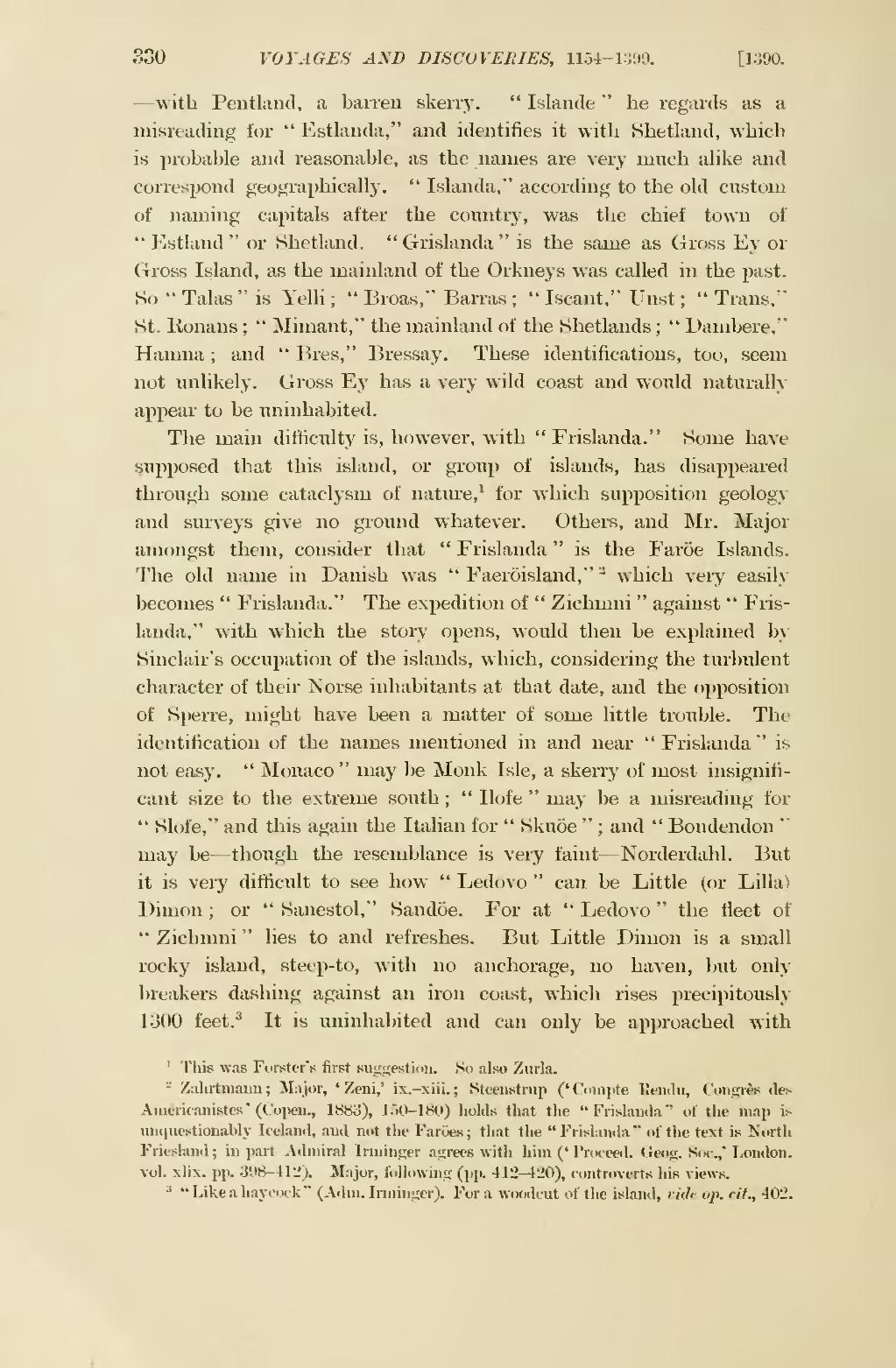— with Pentland, a barren skerry. "Islande" he regards as a misreading for "Estlanda," and identifies it with Shetland, which is probable and reasonable, as the names are very much alike and correspond geographically. "Islanda," according to the old custom of naming capitals after the country, was the chief town of "Estland" or Shetland. "Grislanda" is the same as Gross Ey or Gross Island, as the mainland of the Orkneys was called in the past. So "Talas" is Yelli; "Broas," Barras; "Iscant," Unst; "Trans," St. Ronans; "Mimant," the mainland of the Shetlands; "Dambere," Hamna; and "Bres," Bressay. These identifications, too, seem not unlikely. Gross Ey has a very wild coast and would naturally appear to be uninhabited.
The main difficulty is, however, with "Frislanda." Some have supposed that this island, or group of islands, has disappeared through some cataclysm of nature,[1] for which supposition geology and surveys give no ground whatever. Others, and Mr. Major amongst them, consider that "Frislanda " is the Faröe Islands. The old name in Danish was "Faeröisland,"[2] which very easily becomes "Frislanda." The expedition of "Zichmni" against "Frislanda," with which the story opens, would then be explained by Sinclair's occupation of the islands, which, considering the turbulent character of their Norse inhabitants at that date, and the opposition of Sperre, might have been a matter of some little trouble. The identification of the names mentioned in and near "Frislanda" is not easy. "Monaco" may be Monk Isle, a skerry of most insignificant size to the extreme south; "Ilofe " may be a misreading for "Slofe," and this again the Italian for "Skuöe"; and "Bondendon" may be — though the resemblance is very faint — Norderdahl. But it is very difficult to see how "Ledovo" can be Little (or Lilla) Dimon; or "Sanestol," Sandöe. For at "Ledovo" the fleet of "Zichmni" lies to and refreshes. But Little Dimon is a small rocky island, steep-to, with no anchorage, no haven, but only breakers dashing against an iron coast, which rises precipitously 1300 feet.[3] It is uninhabited and can only be approached with
- ↑ This was Forster's first suggestion. So also Zurla.
- ↑ Zahrtmann; Major, 'Zeni,' ix.-xiii.; Steenstrup ('Compte Rendu, Congrès des Américanistes' (Copen., 1883), 150-180) holds that the "Frislanda" of the map is unquestionably Iceland, aud not the Faröes; that the "Frislanda" of the text is North Friesland; in part Admiral Irminger agrees with him ('Proceed. Geog. Soc.,' London, vol. xlix. pp. 398-412). Major, following (pp 412-120), controverts his views.
- ↑ "Like a haycock" (Adm. Irminger). For a woodcut of the island, vide op. cit., 402.
